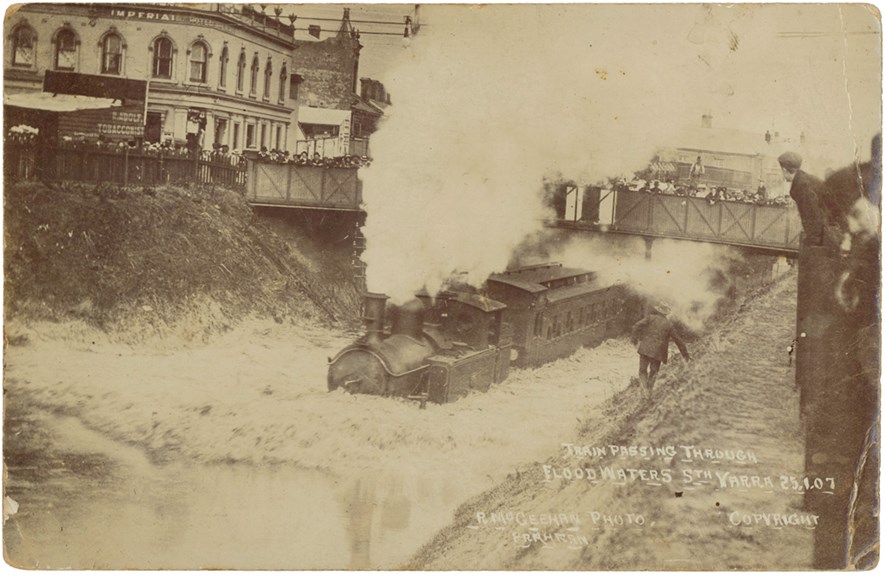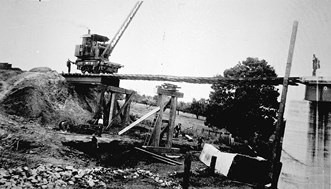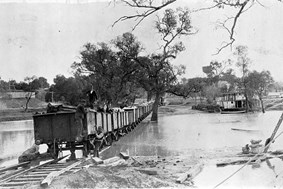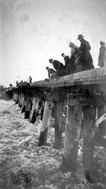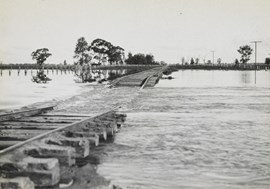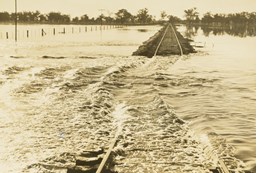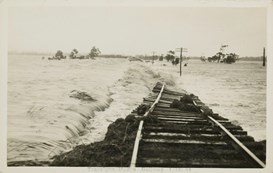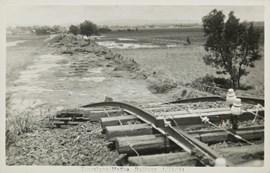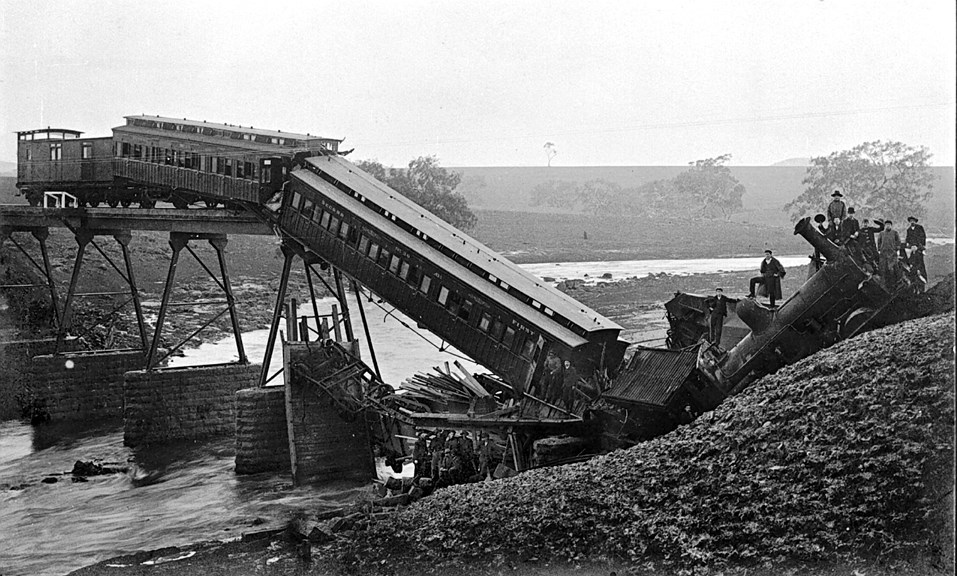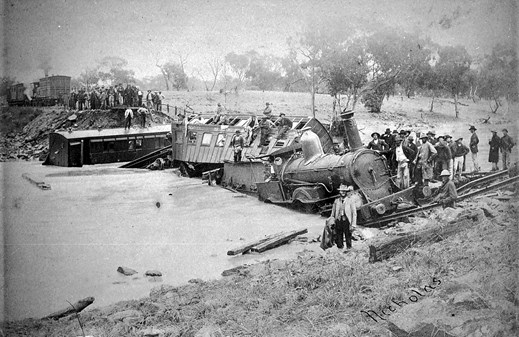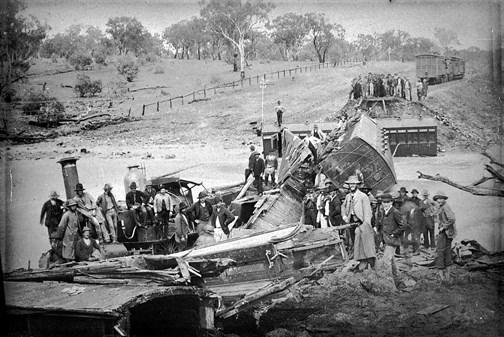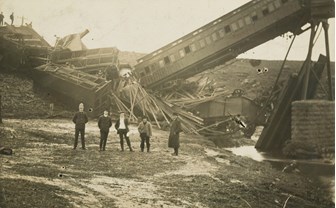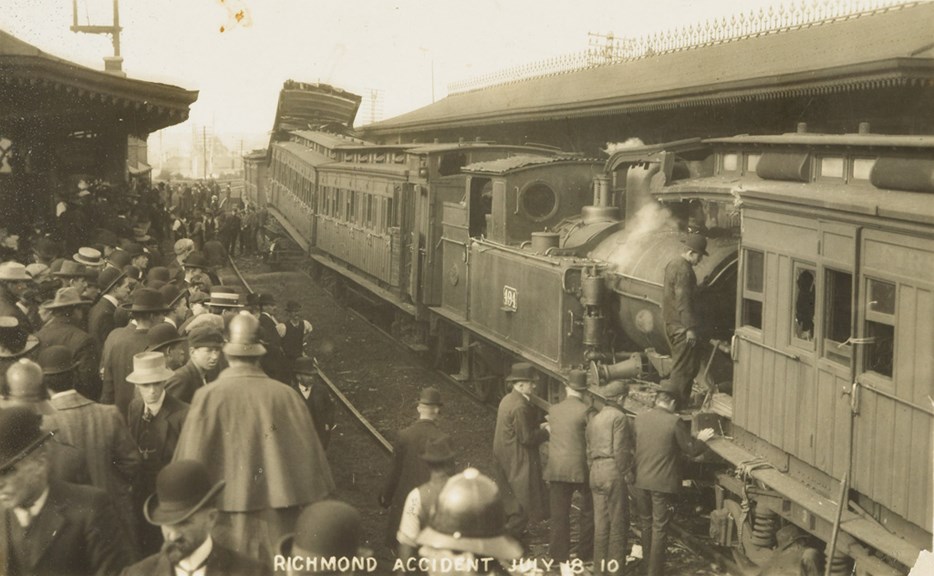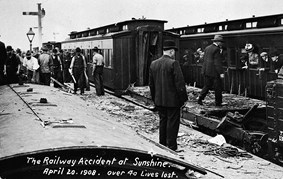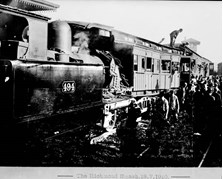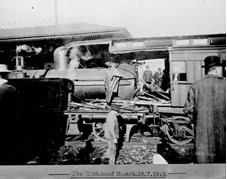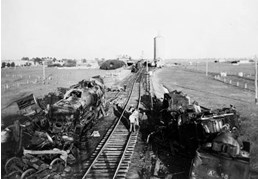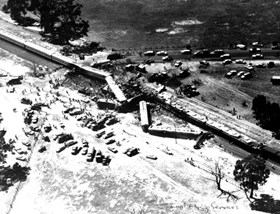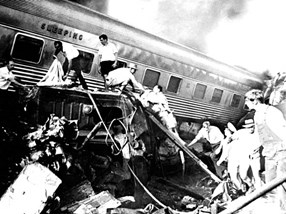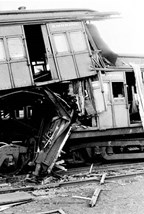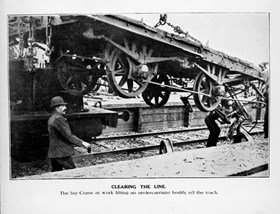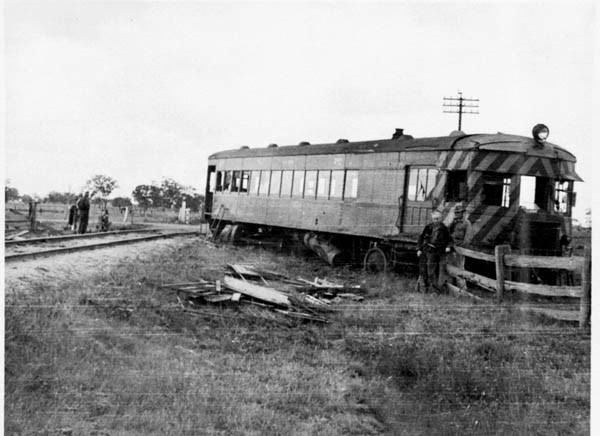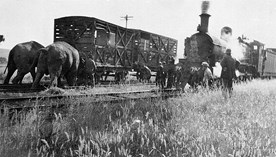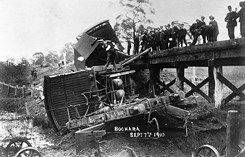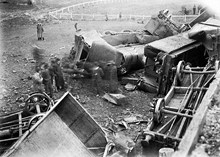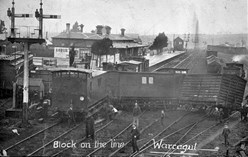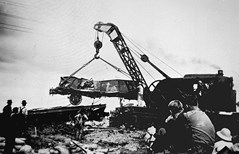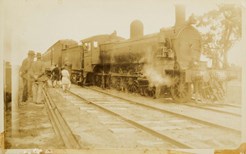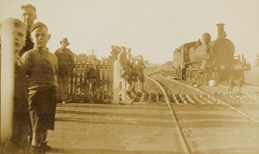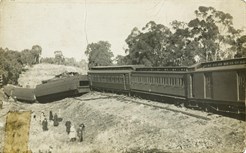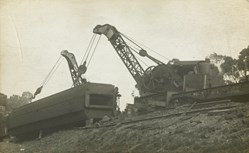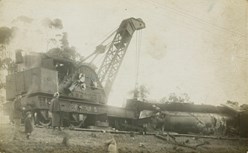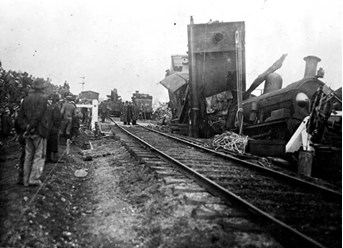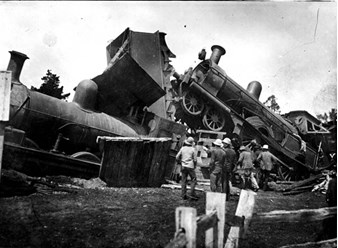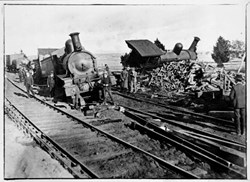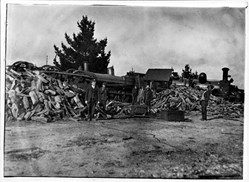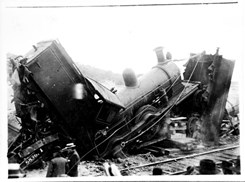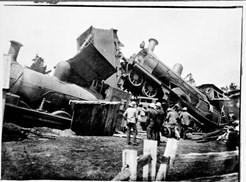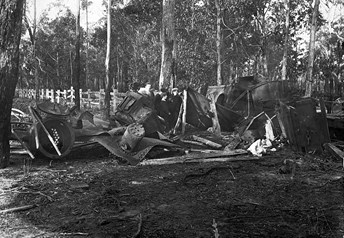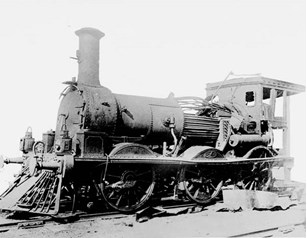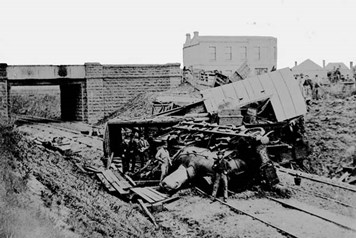Disasters
Compared to automobiles railway travel is a very safe form of transport. Nonetheless there have been railway disasters in Victoria involving injury and fatality. While the introduction of safe-working systems in the 1930s and improving communication technologies have removed many of the risks, many railway accidents are well remembered.
Multiple factors combine to allow a railway accident to occur. Failure of equipment, miscommunication and inclement weather have all resulted in mishaps. On occasions the failure of staff to adequately perform their responsibilities - either due to negligence or working conditions which impeded them in fulfilling their duties - has also resulted in disaster.
Train disasters have held a fascination for the public beyond the fact that disruption to the rail service can a wide material impact. As a potent symbol of the industrial revolution and the technological progress, the vulnerability of trains displayed in accidents was a source of fear and fascination.
Floods
Floods are often a disaster of the permanent way rather than of rolling stock. The damage caused by floods and the resultant repair work required made floods one the most significant forms of disaster experienced by the railways, often causing the suspension of the rail service for several weeks.
Whilst the track was submerged little could be done, other than cancel the train. Once the floodwaters cleared it was time to check whether the tracks were displaced, if the bridges were still solid and whether the embankments were stable. The rebuilding and redesign of the track was often quite extensive. In the album of photographs presented to Charles H. Perrin, Chief Engineer for Railway Construction 1923-1932, many of the photographs of the major bridge works that he supervised are accompanied by photographs of the floods which necessitated them. Many of the rail accidents involving collapsing bridges were actually caused by the weakening of the bridges during flooding.
Collapsing bridges
Railway bridges could be made vulnerable by floodwaters damaging their structure and footings. Shifting footings and subsided piers could cause devastating alteration to the positioning of the track.
Widespread flooding throughout the state during the winter of 1909 caused damage to dozens of railway bridges and a major disruption of rail services. One of the affected bridges, McCallums Creek bridge, was the site of a dramatic train accident. Flood waters had weakened the foundation that supported one of the bridge's legs, which subsequently collapsed when the train passed over it. Fortunately no fatalities occurred, and a considerable part of the train was recovered.
Collisions
The dependence of the railways on timetables and communication is most evident when these things fail. Collisions are the terrifying result.
Two of Victoria's most significant accidents occurred early in the twentieth century. The collision of two trains at Sunshine station in 1908 resulted in 44 fatalities and 413 injured. At the time this was the most serious accident to have occurred in Australia. A crowded passenger train was hit from behind by another passenger train, telescoping carriages and throwing passengers from the train. In 1910, at Richmond station, two passenger trains collided, causing nine fatalities and 114 injuries. These accidents were the low points in a series of accidents that prompted significant improvements in the safe-working practises of Victoria Railways.
The collision of two trains at Violet Town in 1969 was a devastating event for a rail system that had made many improvements to safety. The collision occurred between the 'up' goods train to Albury and the 'down' Southern Aurora – the luxury overnight service between Sydney and Melbourne. Nine people were killed, and more than 40 people injured. An investigation into the accident found that the driver of the Southern Aurora had died or fallen into a coma at least 10 kilometres away from the accident scene.
Derailments
The danger of derailments was such that the railways department employed gangs all along the line to check daily if there were any blockages on the track. Most derailments were caused by some fault in the permanent way. Loose dog spikes, loose rails and buckled rails could all send a train careening off the rails. Floods, faults in construction material and wear-and-tear generally caused these changes to the track.
The danger of derailments came both from the chance that the train would overturn and the risk of explosion or fire. Further danger came from the damage caused to the track during a derailment. Breakdown crews and maintenance workers would hurry to clear and repair the track to minimise disruption to the rail service.
Engine accidents
The explosion of locomotive boilers was one of the most dramatic disasters. Steam-powered locomotives necessarily relied on creating conditions of high temperature and high pressure to enable the change of water to steam. When faults in the train's boiler allowed a rapid drop in pressure the water within the boiler could rapidly expand and exploding. The introduction of diesel engines removed the risk of boiler explosions.
Brake failure was the cause of an accident at Beaufort in 1910. A runaway goods train resulted in the death of three railway staff. The accident was part of a string of incidents around this time that prompted the introduction of improved safe-working procedures.
